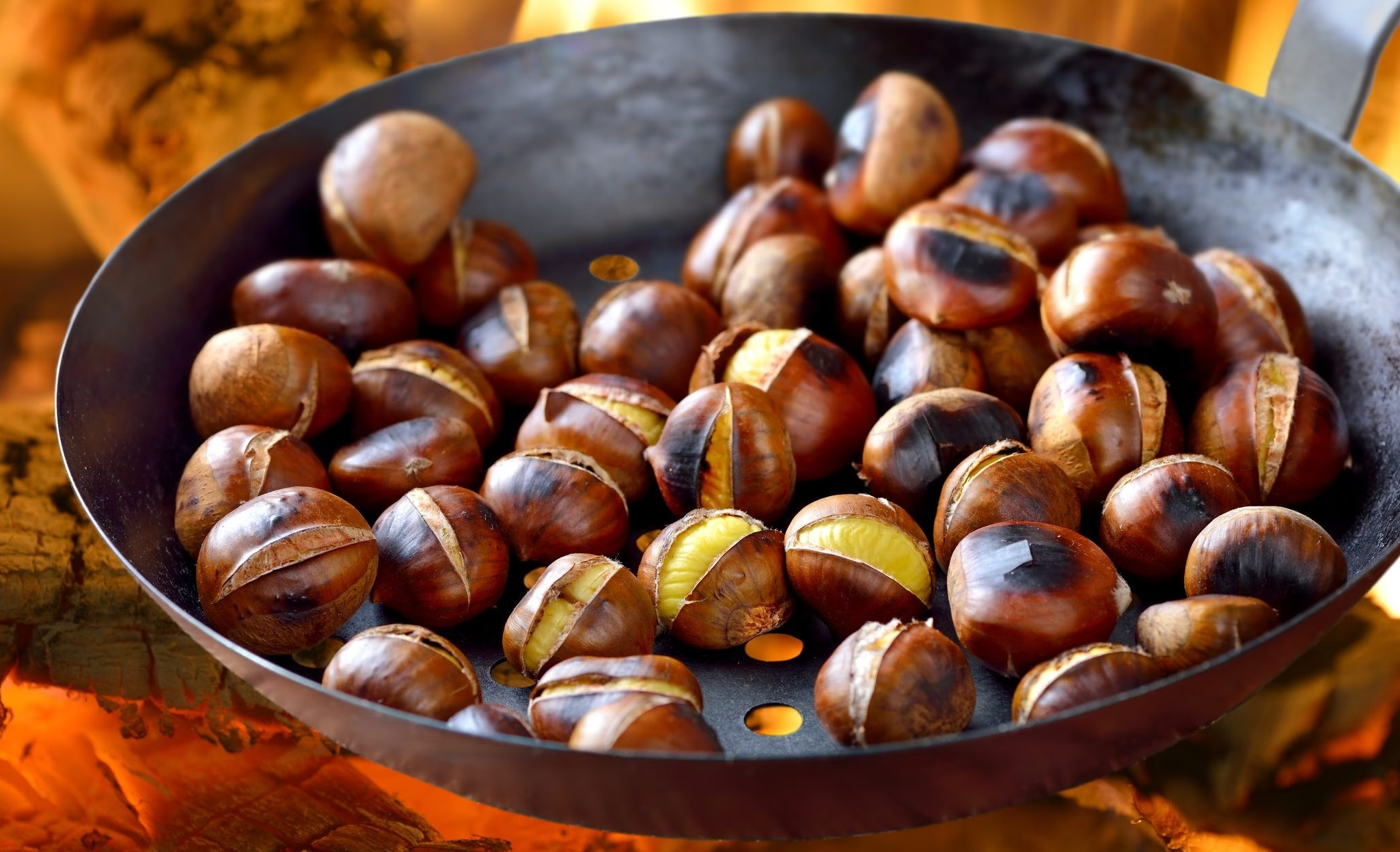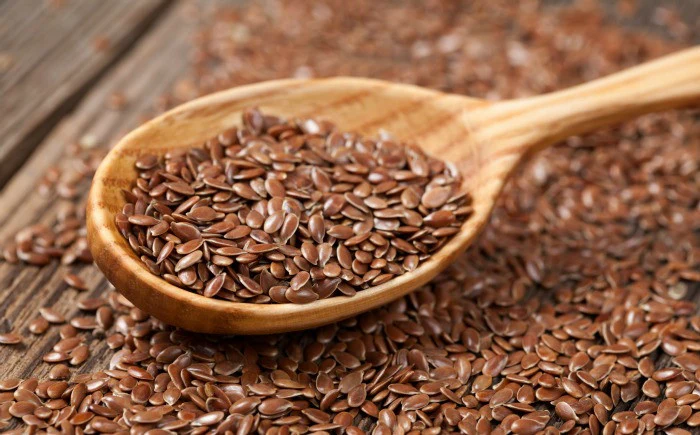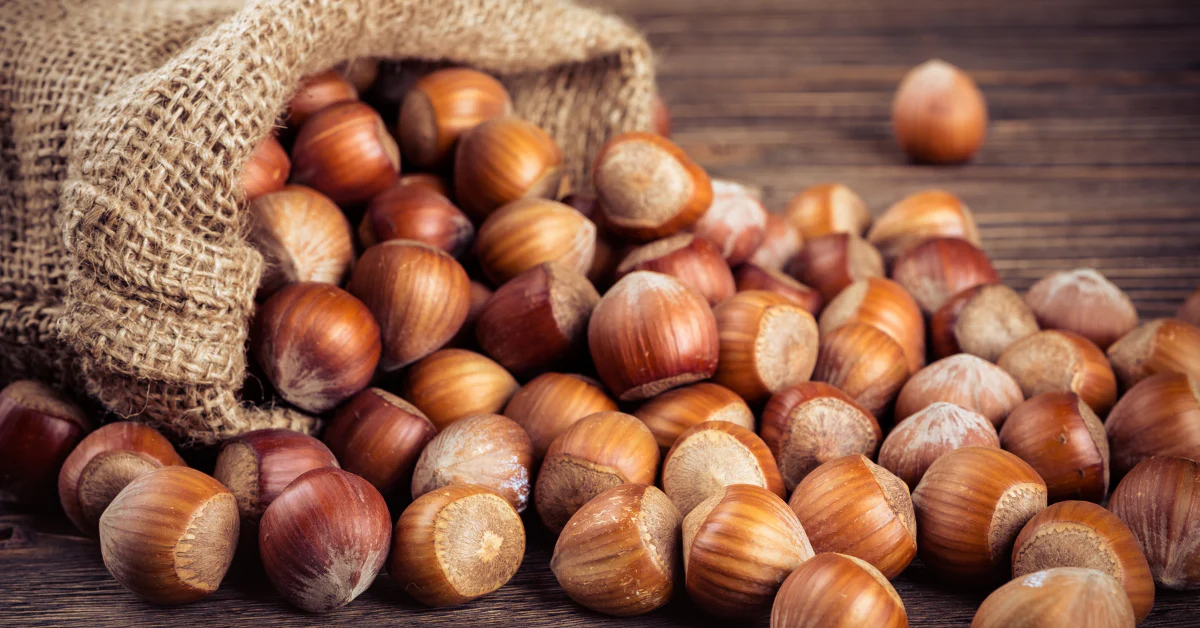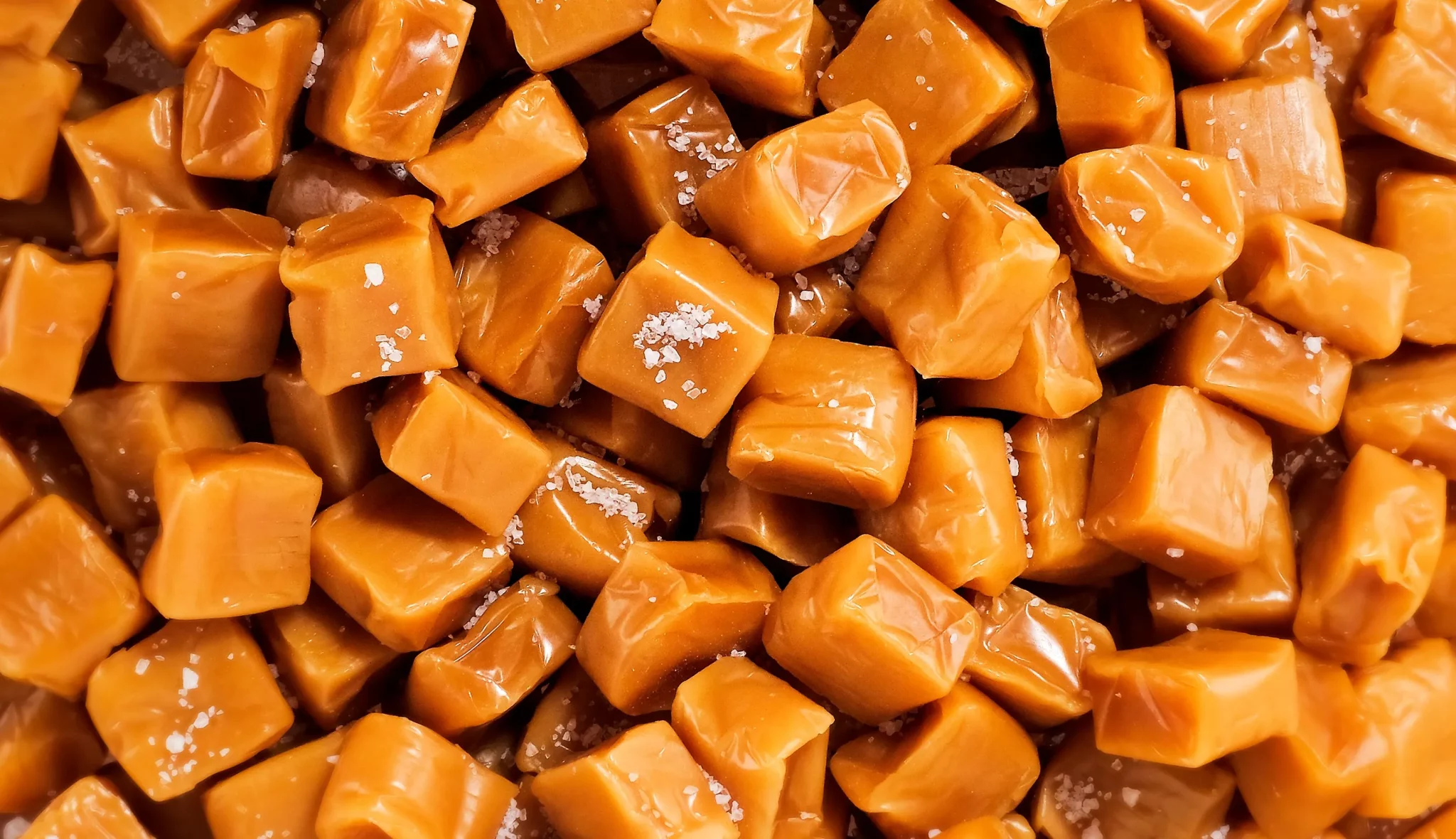
Brown foods often get overlooked, with many people thinking they are bland. But brown foods can be quite tasty and nutritious, offering a variety of flavors and health benefits.
In this article, we’ll explore 40 different brown food varieties, from grains and legumes to meats and baked goods. You’ll learn about their unique characteristics, culinary uses, and nutritional value.
Whether you’re looking to add more fiber to your diet, try out international cuisine, or mix up your meal routine, you will surely find some appealing brown food options to incorporate into your cooking and snacking.
Let’s explore the wonderful world of brown foods, from everyday staples to lesser-known gems worth seeking out.
Different Varieties of Brown Food
1. Whole Wheat Bread
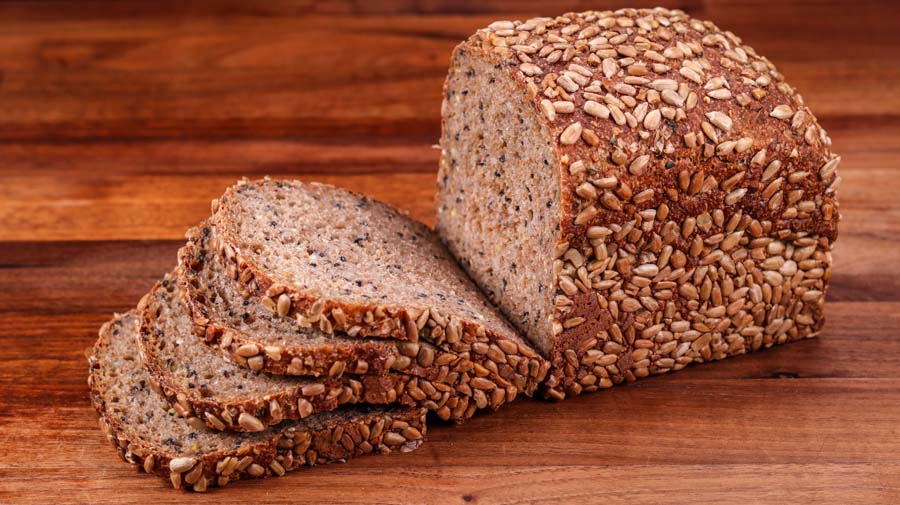
Whole wheat bread is made from flour that contains the entire wheat grain, including bran, germ, and endosperm.
It has a denser texture and nuttier flavor than white bread. Due to its higher fiber and nutrient content, whole wheat bread is often considered a healthier option.
- Origin: Ancient Egypt and the Fertile Crescent
- Common Uses: Sandwiches, toast, bread crumbs, bread pudding, side to soups and salads
- Health Benefits: Rich in fiber, B vitamins, minerals, and protein; may improve digestion, heart health, and weight management
2. Brown Rice

Brown rice is a whole-grain rice variety in which only the outermost layer (husk) is removed, leaving the nutrient-rich bran and germ intact. It has a chewy texture and nutty flavor.
Brown rice takes longer than white rice and is considered more nutritious.
- Origin: Ancient China and other parts of Asia
- Common Uses: Stir-fries, rice bowls, salads, soups, side dish
- Health Benefits: Good source of fiber, vitamins, minerals, and essential amino acids; may help with blood sugar control and heart health of fiber, vitamins, minerals and essential amino acids; may help with blood sugar control and heart health
3. Chocolate

Chocolate is a beloved confection made from roasted and ground cacao beans. It comes in various forms, including dark, milk, and white chocolate.
Dark chocolate, with its higher cocoa content, is often considered the healthiest option. It is enjoyed for its rich flavor and texture.
- Origin: Mesoamerica (modern-day Mexico and Central America)
- Common Uses: Desserts, candy, baking, beverages, cooking
- Health Benefits: Dark chocolate is rich in antioxidants and may improve heart health, brain function, and mood
4. Cinnamon

Cinnamon is a spice obtained from the inner bark of several tree species in the genus Cinnamomum.
Its warm, sweet, and aromatic flavor complements both sweet and savory dishes. Cinnamon is available in whole sticks or ground powder form.
- Origin: Sri Lanka, Indonesia, and other parts of Southeast Asia
- Common Uses: Baked goods, beverages, curries, stews, spice blends
- Health Benefits: May help lower blood sugar, reduce inflammation, and have antimicrobial properties
5. Cocoa Powder

Cocoa powder is made by grinding cocoa beans and removing most fat (cocoa butter). It has a rich, chocolaty flavor and is used to add chocolate flavor to various recipes.
Unsweetened cocoa powder is a healthier option compared to sweetened varieties.
- Origin: Mesoamerica (modern-day Mexico and Central America)
- Common Uses: Baking, desserts, beverages, savory dishes
- Health Benefits: Rich in antioxidants, may improve heart health and brain function
6. Coffee
Coffee is a brewed beverage made from roasted coffee beans, which are the seeds of berries from the Coffee plant.
Its complex flavor profile can include notes of fruit, chocolate, and nuts. Coffee is enjoyed worldwide for its stimulating effects and distinct taste.
- Origin: Ethiopia and the Arabian Peninsula
- Common Uses: Beverages (hot and cold), cooking, baking
- Health Benefits: May improve mental alertness, physical performance, and liver health; rich in antioxidants
7. Dates

Dates are the sweet, chewy fruit of the date palm tree. They have a caramel-like flavor and are often used as a natural sweetener.
Dates are available fresh, dried, or in paste form and are a staple in Middle Eastern and North African cuisines.
- Origin: Middle East and North Africa
- Common Uses: Snacks, desserts, baking, savory dishes, smoothies
- Health Benefits: Good source of fiber, vitamins, and minerals; may aid digestion and blood sugar control
8. Gingerbread

Gingerbread is a baked treat flavored with ginger, cinnamon, and other spices.
It can be made into cakes and cookies or used to construct gingerbread houses. Gingerbread has a warm, spicy flavor and is often associated with holiday celebrations.
- Origin: Europe (exact origin is debated)
- Common Uses: Desserts, snacks, holiday decorations
- Health Benefits: Contains some beneficial spices but often high in sugar and calories
9. Molasses

Molasses is a thick, dark syrup produced during the sugar-making process. It has a rich, bittersweet flavor and is used as a sweetener and flavoring agent in various recipes.
Molasses comes in different grades, with darker varieties having a more robust taste.
- Origin: Caribbean and South America
- Common Uses: Baking, marinades, sauces, beverages
- Health Benefits: Contains some vitamins and minerals, including iron and calcium
10. Nutmeg
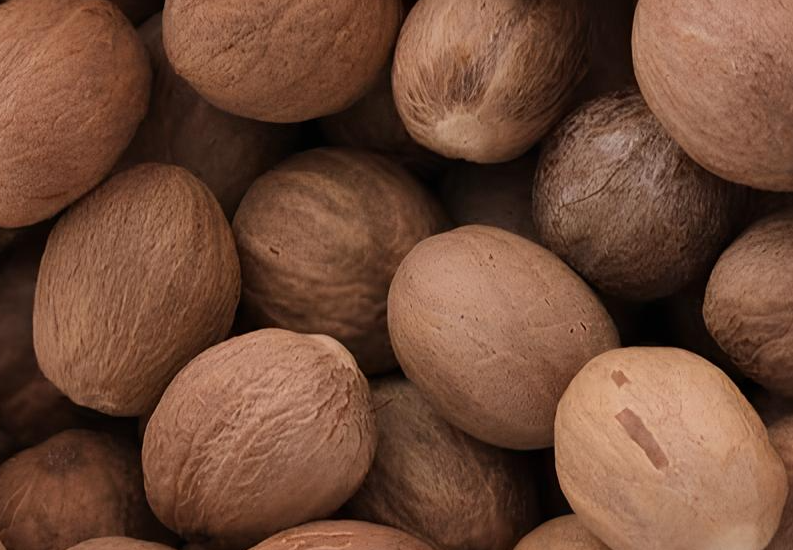
Nutmeg is a spice made from the seed of the nutmeg tree. It has a warm, slightly sweet, nutty flavor with a hint of clove.
Nutmeg is available whole or ground and is used in sweet and savory dishes.
- Origin: Indonesian Banda Islands
- Common Uses: Baked goods, beverages, savory dishes, spice blends
- Health Benefits: It may have anti-inflammatory and antimicrobial properties but should be used in moderation
11. Pinto Beans

Pinto beans are a variety of common beans with a mottled, tan, and brown appearance.
They have a creamy texture and mild, earthy flavor when cooked. Pinto beans are a staple in Mexican and Southwestern US cuisines and are often used in refried beans.
- Origin: Mexico and Peru
- Common Uses: Refried beans, soups, stews, burritos, side dishes
- Health Benefits: Rich in fiber, protein, vitamins, and minerals; may aid digestion and blood sugar control
12. Raisins
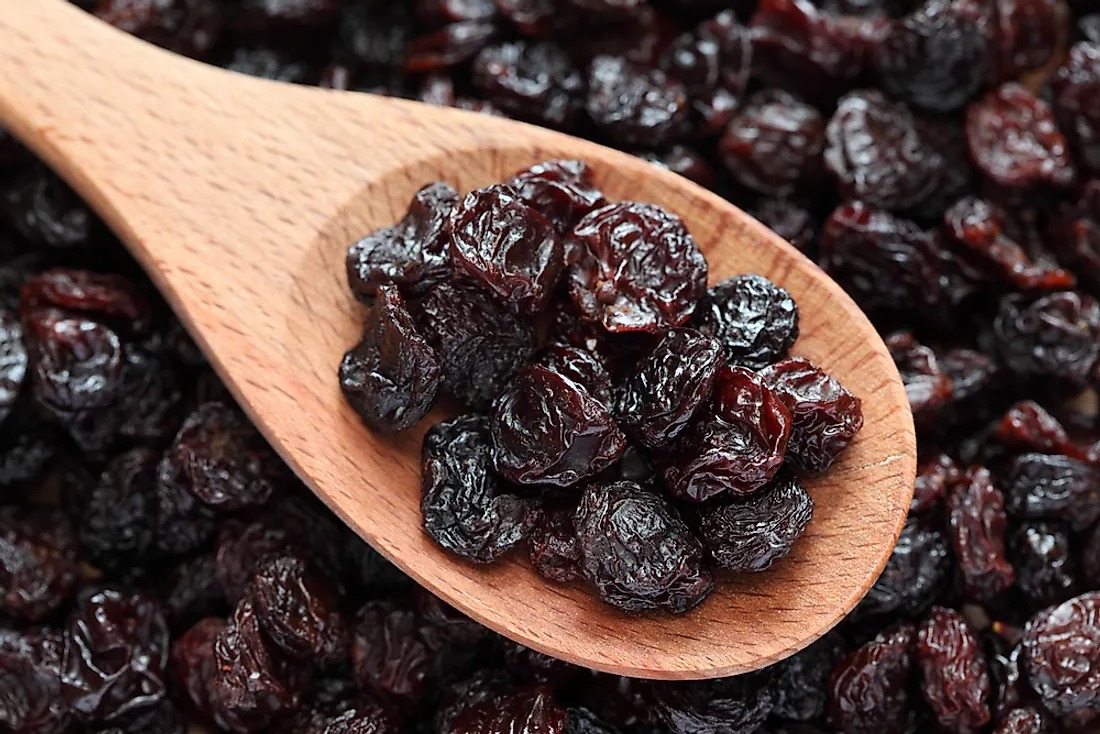
Raisins are dried grapes with a sweet, concentrated flavor and chewy texture. They are available in different varieties, such as dark raisins (made from Thompson seedless grapes) and golden raisins (made from white grapes).
Raisins are a popular snack and ingredient in various recipes.
- Origin: Middle East and Mediterranean region
- Common Uses: Snacks, baked goods, cereals, savory dishes, trail mix
- Health Benefits: Good source of fiber, vitamins, and minerals; may aid digestion and iron absorption
13. Soy Sauce
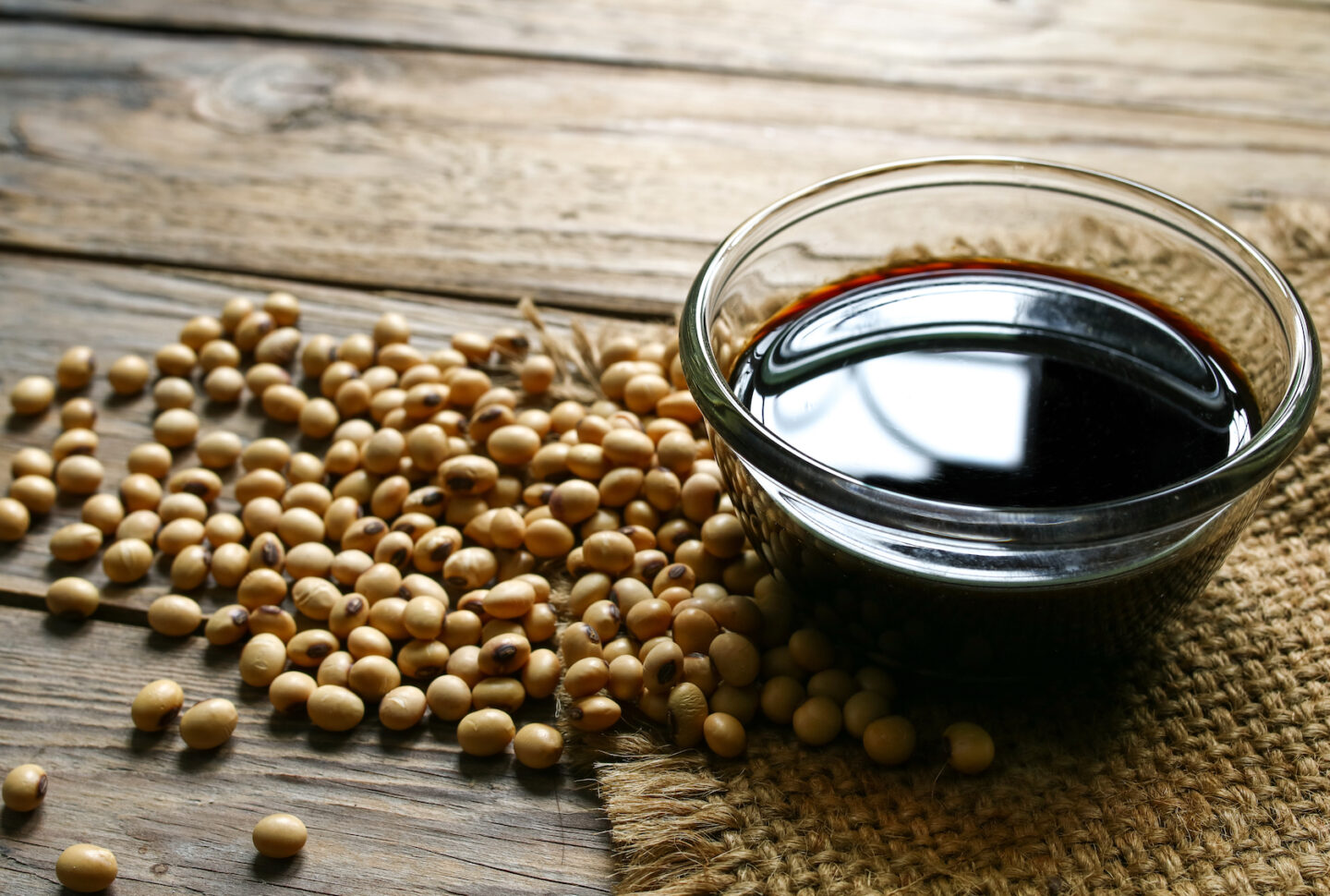
Soy sauce is a liquid condiment made from fermented soybeans, wheat (in some varieties), salt, and water. It has a salty, umami flavor and dark brown color.
Soy sauce is a staple in many East and Southeast Asian cuisines and adds depth and complexity to dishes.
- Origin: China
- Common Uses: Stir-fries, marinades, sauces, dips, seasoning
- Health Benefits: Low in calories, contains some antioxidants and amino acids, but high in sodium
14. Tamarind
Tamarind is a tropical fruit with a brown, pod-like shell containing a sticky, tart-sweet pulp.
The pulp is a flavoring agent in various cuisines, particularly in South and Southeast Asia, Mexico, and the Caribbean. Tamarind is available fresh, dried, or concentrated.
- Origin: Tropical Africa
- Common Uses: Curries, chutneys, sauces, beverages, candies
- Health Benefits: Good source of vitamins, minerals, and antioxidants; may aid digestion
15. Walnuts
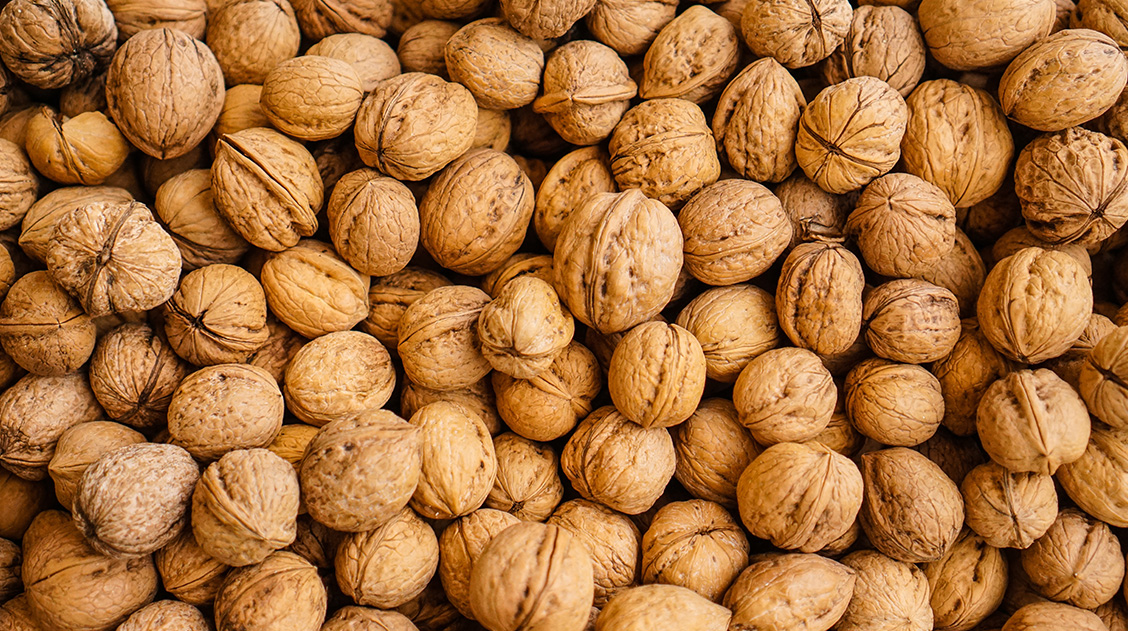
Walnuts are edible nuts from the walnut tree. They are known for their distinct brain-like appearance, crunchy texture, and slightly bitter, earthy flavor.
Walnuts are often eaten raw, roasted, or used in various sweet and savory dishes.
- Origin: Central Asia and the Mediterranean region
- Common Uses: Snacks, baked goods, salads, pestos, savory dishes
- Health Benefits: Rich in healthy fats, protein, vitamins, and minerals; may support brain health and lower cholesterol
16. Almonds
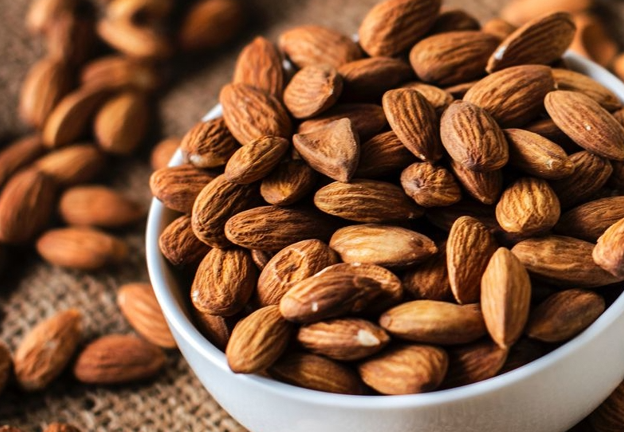
Almonds are edible nuts from the almond tree. They are known for their oval shape and brown, textured outer skin. They have a crunchy texture and a mildly sweet, nutty flavor.
Almonds are enjoyed raw, roasted, or as an ingredient in various dishes and products, such as almond milk and almond flour.
- Origin: Middle East and South Asia
- Common Uses: Snacks, baked goods, confectionery, savory dishes, almond milk
- Health Benefits: Rich in healthy fats, protein, fiber, vitamins, and minerals; may support heart health and weight management
17. Brown Lentils
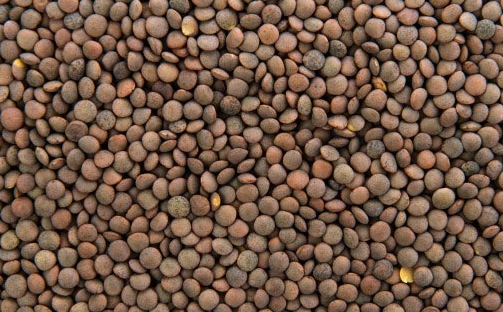
Brown lentils are known for their lens-like shape and brown color.
Brown lentils have a mild, earthy flavor and hold their shape well when cooked. They are a staple in many cuisines and are often used in soups, stews, and veggie burgers.
- Origin: Middle East and Mediterranean region
- Common Uses: Soups, stews, salads, veggie burgers, side dishes
- Health Benefits: Rich in fiber, protein, vitamins, and minerals; may aid digestion and heart health
18. Buckwheat

Buckwheat is a pseudocereal known for its triangular, brown seeds. Despite its name, buckwheat is gluten-free and not related to wheat.
It has a nutty, slightly bitter flavor and is used in various forms, such as groats, flour, and noodles.
- Origin: Central Asia
- Common Uses: Porridge, pancakes, noodles, bread, side dishes
- Health Benefits: Good source of fiber, protein, vitamins, and minerals; may support heart health and blood sugar control
19. Chestnuts
Chestnuts are edible nuts from the chestnut tree encased in a spiny brown bur.
When cooked, they have a sweet, nutty flavor and starchy texture. Chestnuts are often roasted, boiled, or used in sweet and savory dishes.
- Origin: Asia Minor and Southern Europe
- Common Uses: Roasted snacks, soups, stuffings, desserts, bread
- Health Benefits: Good source of fiber, vitamins, and minerals; low in fat compared to other nuts
20. Flaxseed
Flaxseed, or linseed, is a small, brown, or golden seed from the flax plant. It has a nutty, slightly earthy flavor and is known for its high omega-3 fatty acid content.
Flaxseed is available whole, ground, or as an oil and is used in various recipes and products.
- Origin: Middle East and Mediterranean region
- Common Uses: Baked goods, smoothies, oatmeal, yogurt topping, ground as an egg substitute
- Health Benefits: Rich in fiber, omega-3 fatty acids, lignans, and protein; may support heart health and digestion
21. Hazelnuts
Hazelnuts, or filberts, are edible nuts from the hazel tree. They have a round, brown shell encasing a small, cream-colored kernel.
Hazelnuts are rich, slightly sweet, and nutty and often used in confectionery and savory dishes.
- Origin: Europe and Asia Minor
- Common Uses: Snacks, baked goods, confectionery, savory dishes, spreads (e.g., Nutella)
- Health Benefits: Rich in healthy fats, protein, fiber, vitamins, and minerals; may support heart health
22. Millet
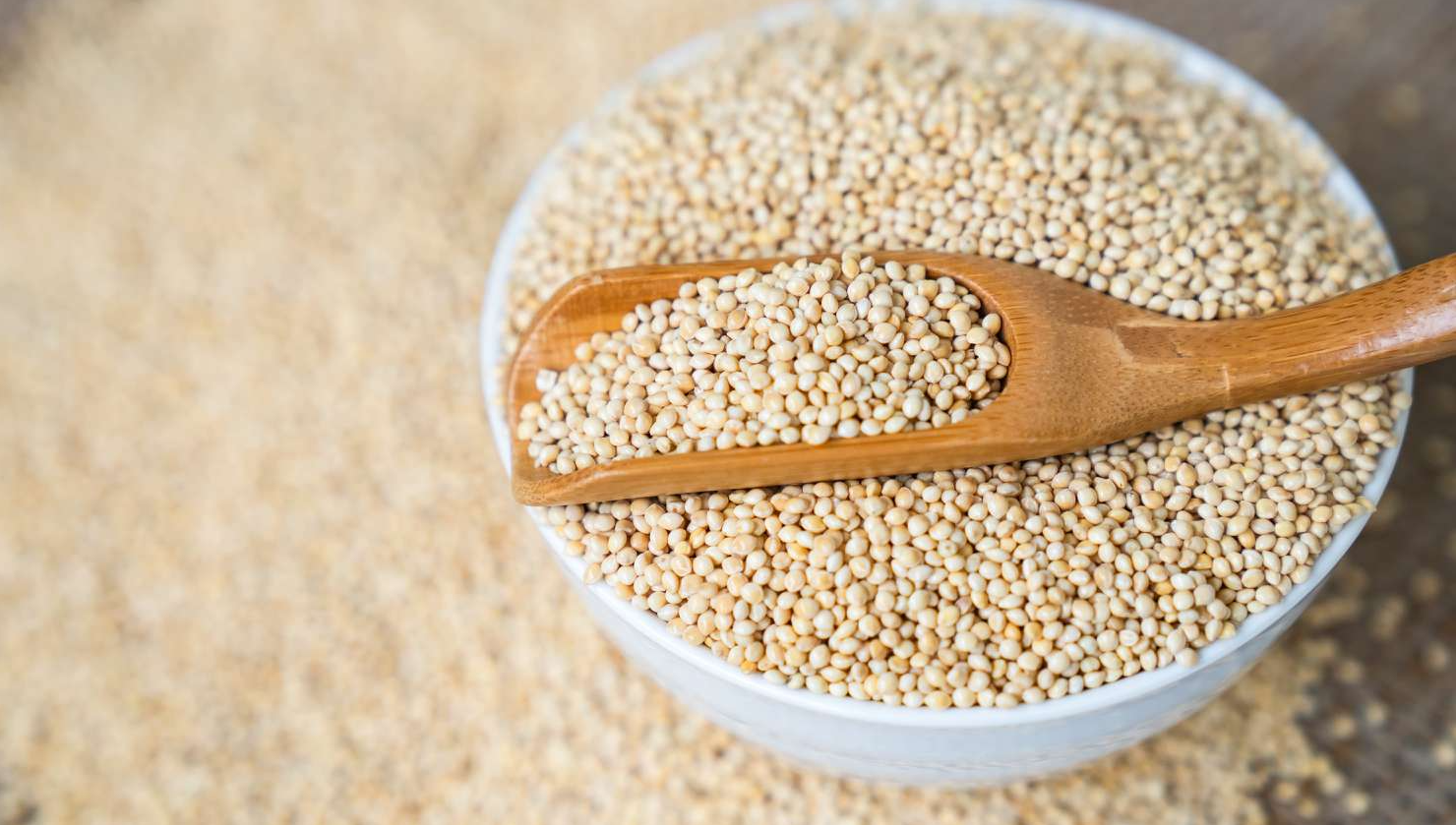
A millet is a small-seeded cereal grain in various colors, including brown, yellow, and red. It has a mild, slightly nutty flavor and is gluten-free.
Millet is a staple food in many parts of Asia and Africa and is often used as a rice or couscous alternative.
- Origin: East Asia and West Africa
- Common Uses: Porridge, bread, side dishes, salads, stews
- Health Benefits: Good source of fiber, protein, vitamins, and minerals; may support digestive health
23. Pecans
Pecans are edible nuts from the pecan tree, known for their brown, elongated, and grooved shells. They have a buttery, slightly sweet, and nutty flavor and are often used in desserts and savory dishes.
Pecans are also enjoyed as a snack, either raw or roasted.
- Origin: North America (Southern United States and Mexico)
- Common Uses: Snacks, baked goods (esp. pecan pie), confectionery, salads, savory dishes
- Health Benefits: Rich in healthy fats, protein, fiber, vitamins, and minerals; may support heart health and brain function
24. Quinoa

Quinoa is a small, round, grain-like seed in various colors, including brown, red, and black. When cooked, it has a nutty flavor and slightly crunchy texture.
Quinoa is a complete protein and gluten-free, making it a popular choice for health-conscious individuals.
- Origin: Andean region of South America
- Common Uses: Salads, soups, stews, side dishes, breakfast bowls
- Health Benefits: Rich in protein, fiber, vitamins, and minerals; may support digestive health and blood sugar control
25. Wild Rice

Wild rice is an aquatic grass seed native to North America. It is known for its long, slender brown or black grains. It has a nutty, slightly chewy texture and is often mixed with other rice varieties.
Wild rice is a staple in Native American cuisine and is gaining popularity worldwide.
- Origin: North America (Great Lakes region)
- Common Uses: Side dishes, soups, stews, salads, stuffings
- Health Benefits: Good source of fiber, protein, vitamins, and minerals; may support heart health and weight management
26. Beef

Beef is the culinary name for meat from cattle. It has a rich, savory flavor and varies in color from light pink to dark brown, depending on the cut and preparation.
Beef is a staple in many cuisines worldwide and is used in various dishes.
- Origin: Cattle domestication began in ancient civilizations around the world
- Common Uses: Steaks, roasts, stews, burgers, meatballs, tacos
- Health Benefits: Rich in protein, iron, zinc, and B vitamins; can be part of a balanced diet when consumed in moderation
27. Bison

Bison, also known as American buffalo, is a large bovine native to North America. Bison meat has a rich, slightly sweet flavor and is leaner than beef.
It is gaining popularity as a healthier alternative to beef and is often used in similar preparations.
- Origin: North America
- Common Uses: Steaks, roasts, burgers, sausages, jerky
- Health Benefits: Lower in fat and calories compared to beef; rich in protein, iron, and B vitamins
28. Lamb
Lamb is the meat from young sheep, typically under one year old. It has a tender texture and mild, slightly gamey flavor.
Lamb is a staple in many cuisines, particularly in Mediterranean, Middle Eastern, and South Asian regions, and is used in various dishes.
- Origin: Sheep were among the first domesticated animals, with origins in the Middle East and Central Asia
- Common Uses: Roasts, chops, stews, curries, kebabs, burgers
- Health Benefits: Rich in protein, iron, zinc, and B vitamins; can be part of a balanced diet when consumed in moderation
29. Mushrooms (portobello, shiitake)

Portobello and shiitake are two popular varieties of edible mushrooms. Portobellos are large, brown mushrooms with a meaty texture and umami flavor.
Shiitakes have a brown, umbrella-shaped cap and a rich, slightly smoky taste. Both are used in various cuisines and are appreciated for their nutritional value.
- Origin: Portobellos are a mature form of the common white button mushroom; shiitakes are native to East Asia
- Common Uses: Grilled, sautéed, or roasted as a meat substitute; soups, stews, stir-fries, sauces
- Health Benefits: Low in calories; good source of fiber, vitamins, minerals, and antioxidants; may support immune function
30. Prunes
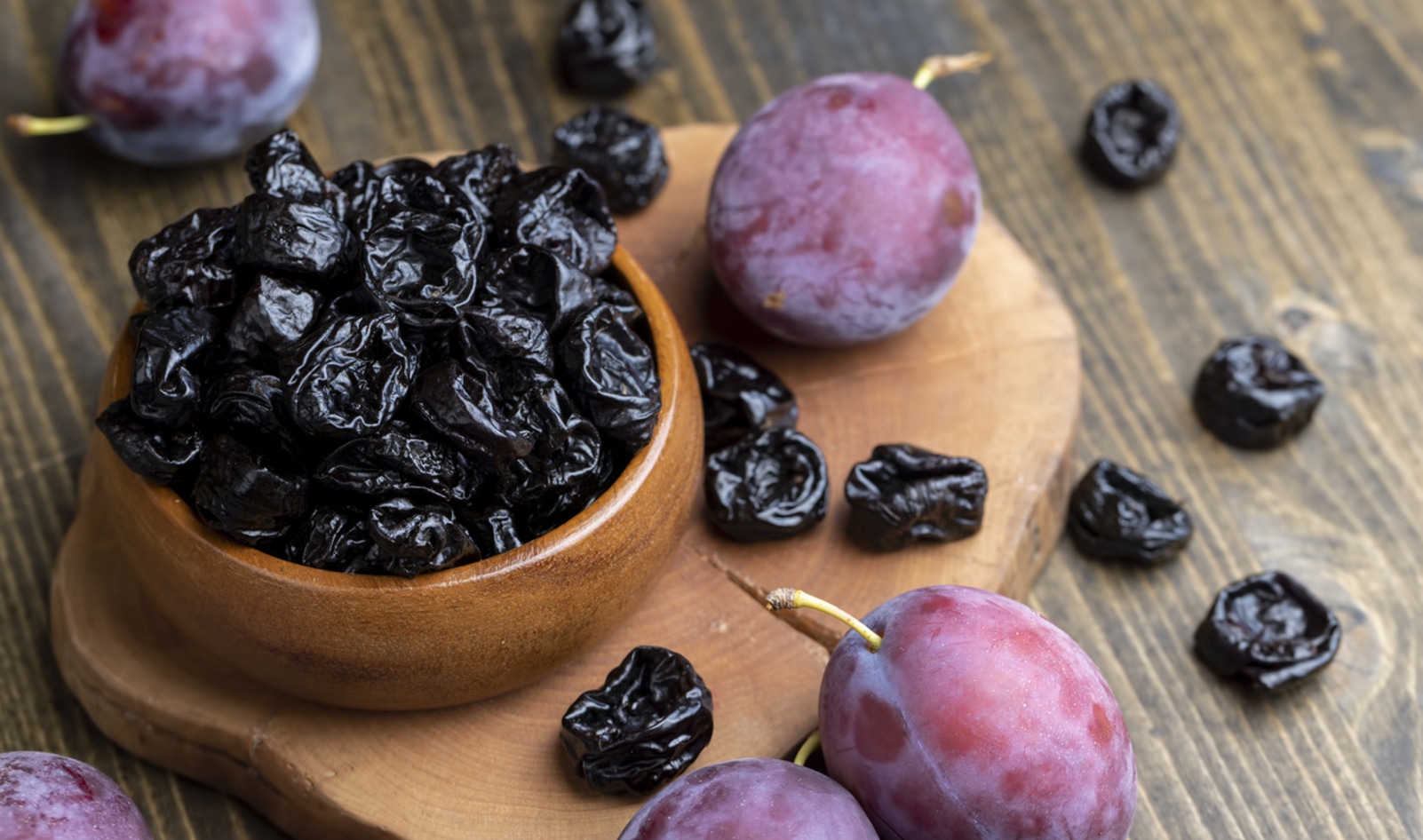
Prunes are dried plums known for their dark brown, wrinkled appearance and sweet, slightly chewy texture. They have a concentrated, rich flavor and are often used in baking and as a natural sweetener.
Prunes are also enjoyed as a snack and are known for their digestive health benefits.
- Origin: Plums, from which prunes are made, are believed to have originated in China
- Common Uses: Snacks, baked goods, sauces, stuffings, meat accompaniments
- Health Benefits: Rich in fiber, vitamins, and minerals; may support digestive health, bone health, and blood sugar control
31. Refried Beans
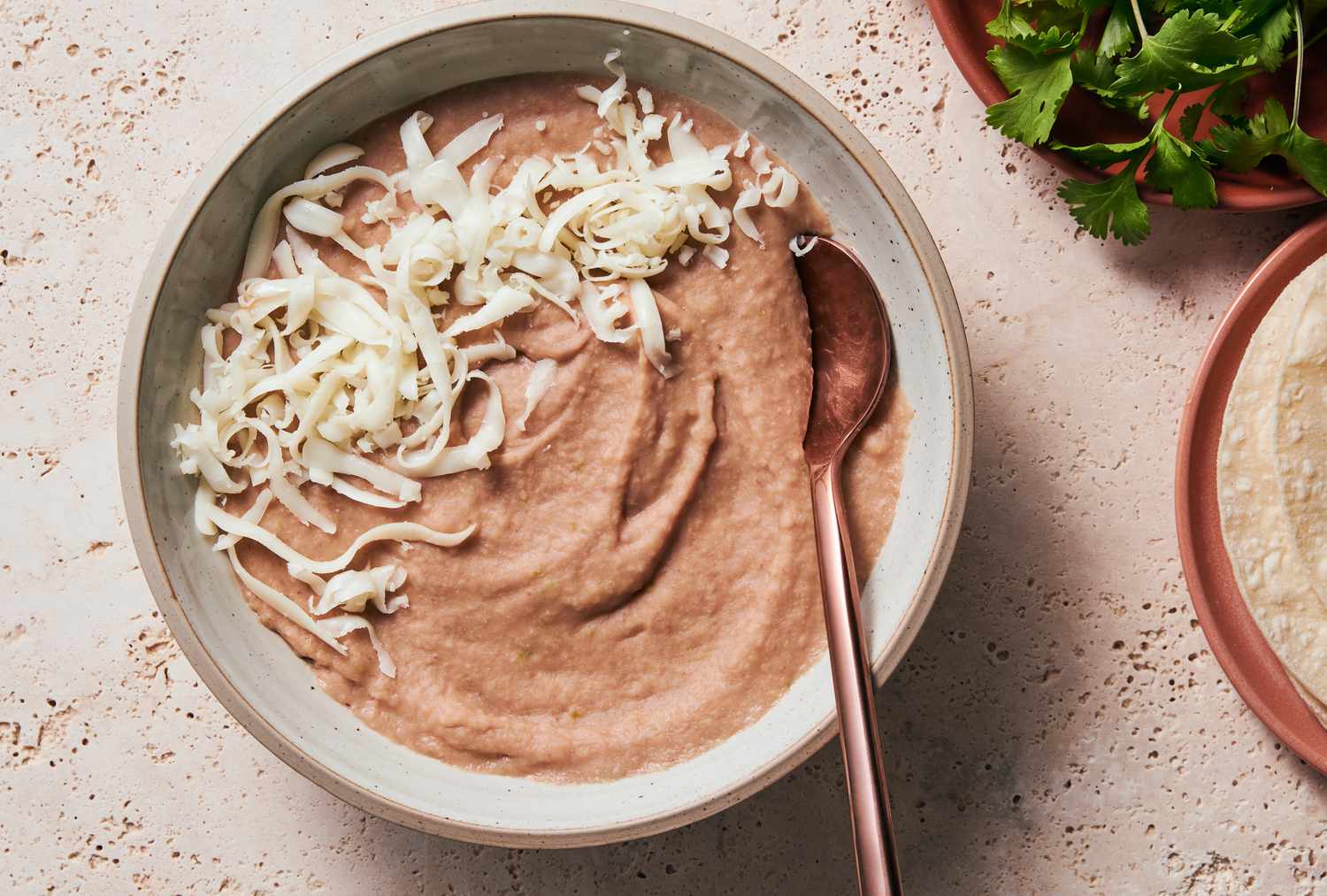
Refried beans are made from cooked and mashed beans, typically pinto beans. They have a creamy, slightly chunky texture and a savory, mildly spicy flavor.
Refried beans are a staple in Mexican and Tex-Mex cuisine and are often served as a side dish or used as a filling.
- Origin: Mexico
- Common Uses: Side dish, burrito and taco filling, dip, tostada topping
- Health Benefits: Good source of fiber, protein, vitamins, and minerals; may support digestive health and blood sugar control
32. Brown Butter
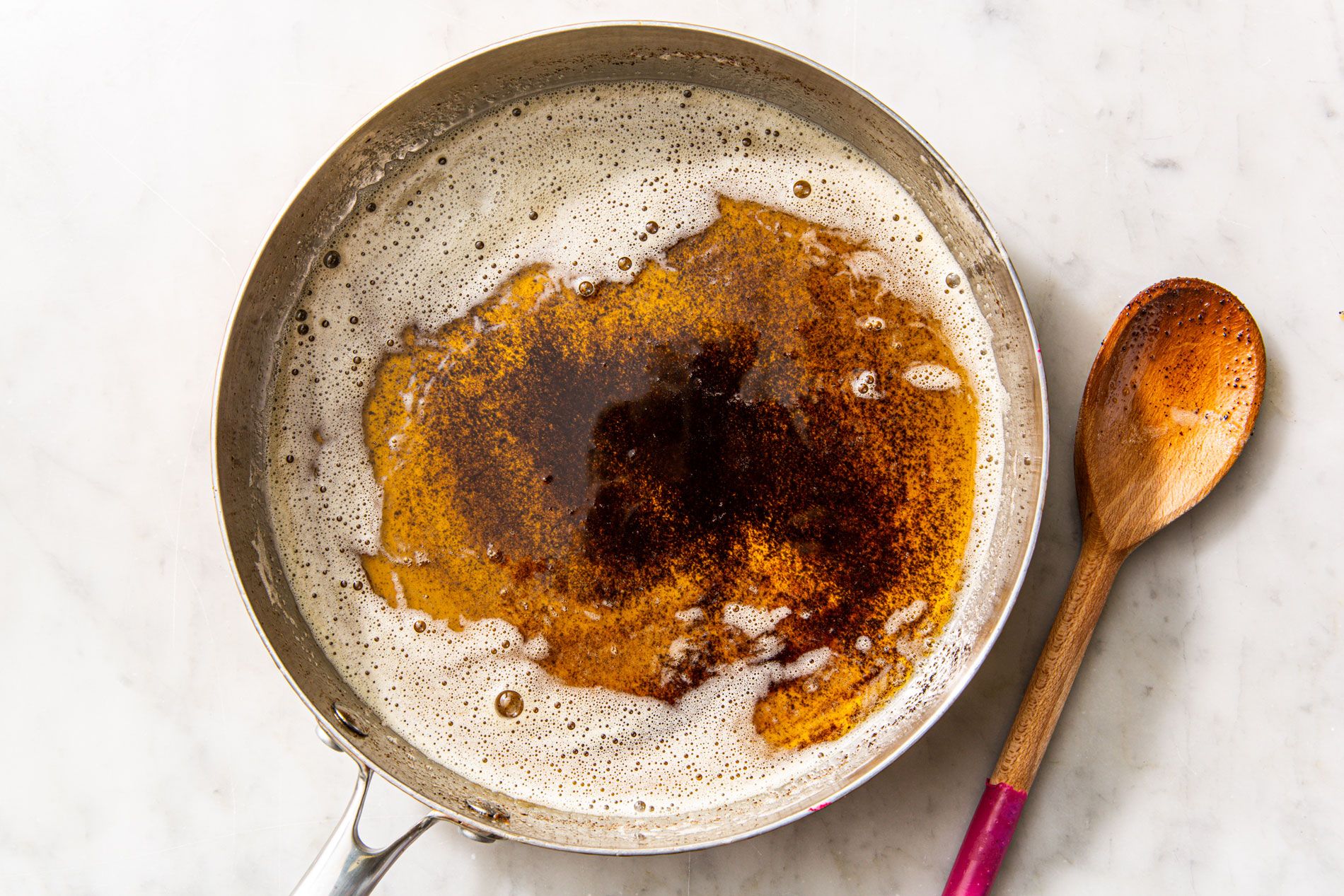
Brown butter, also known as beurre noisette, is butter that has been cooked until the milk solids turn golden brown and develop a nutty, toasty aroma.
It has a rich, complex flavor and is used in sweet and savory dishes to add depth and sophistication.
- Origin: France
- Common Uses: Sauces, pasta dishes, baked goods, popcorn topping
- Health Benefits: Rich in vitamins A and E; may have anti-inflammatory properties; use in moderation due to high-calorie content
33. Caramel
Caramel is a confectionery product made by heating sugar until it turns into a golden-brown, thick liquid.
It has a sweet, slightly bitter, buttery flavor and is used in various forms, such as a sauce, candy, or flavoring. Caramel can also be made with the addition of milk or cream.
- Origin: The exact origin is unclear, but early versions date back to ancient civilizations
- Common Uses: Candy, sauces, dessert topping, flavoring for beverages and baked goods
- Health Benefits: Limited; high in sugar and calories; consumed in moderation as part of a balanced diet
34. Miso

Miso is a traditional Japanese seasoning paste made from fermented soybeans, salt, and koji (a type of fungus). It has a salty, savory, slightly tangy flavor and comes in various colors and strengths.
Miso adds umami flavor to soups, sauces, marinades, and other dishes.
- Origin: Japan
- Common Uses: Soups (e.g., miso soup), sauces, marinades, dressings, spreads
- Health Benefits: Contains beneficial probiotics, vitamins, and minerals; may support digestive health and immune function
35. Pumpernickel Bread
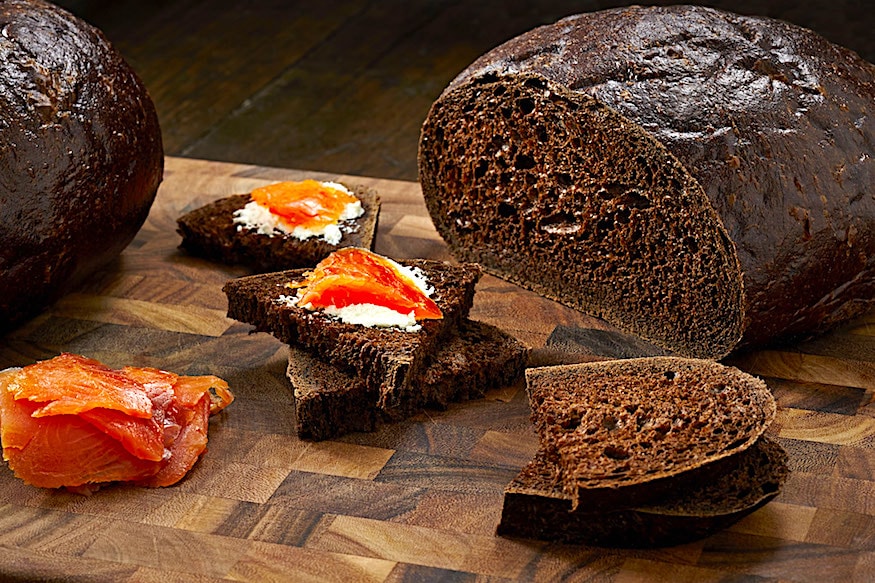
Pumpernickel is a dense, dark brown bread that originated in Germany. It is made from coarsely ground whole rye flour and has a slightly sweet, nutty, and tangy flavor.
Traditional pumpernickel bread is slowly baked at a low temperature for several hours, resulting in its deep color and unique flavor.
- Origin: Germany
- Common Uses: Sandwiches, toast, appetizer base, bread baskets
- Health Benefits: Rich in fiber, vitamins, and minerals; may support digestive health and blood sugar control
36. Rye Bread

Rye bread is made with a significant proportion of rye flour, giving it a dense texture and distinctive, slightly tangy flavor.
It comes in various forms, from light to dark, depending on the type of rye flour used and the addition of other ingredients like molasses or cocoa powder.
- Origin: Europe, particularly Germany and Scandinavia
- Common Uses: Sandwiches, toast, bread baskets, appetizer base
- Health Benefits: Good source of fiber, vitamins, and minerals; may support digestive health and blood sugar control
37. Teff
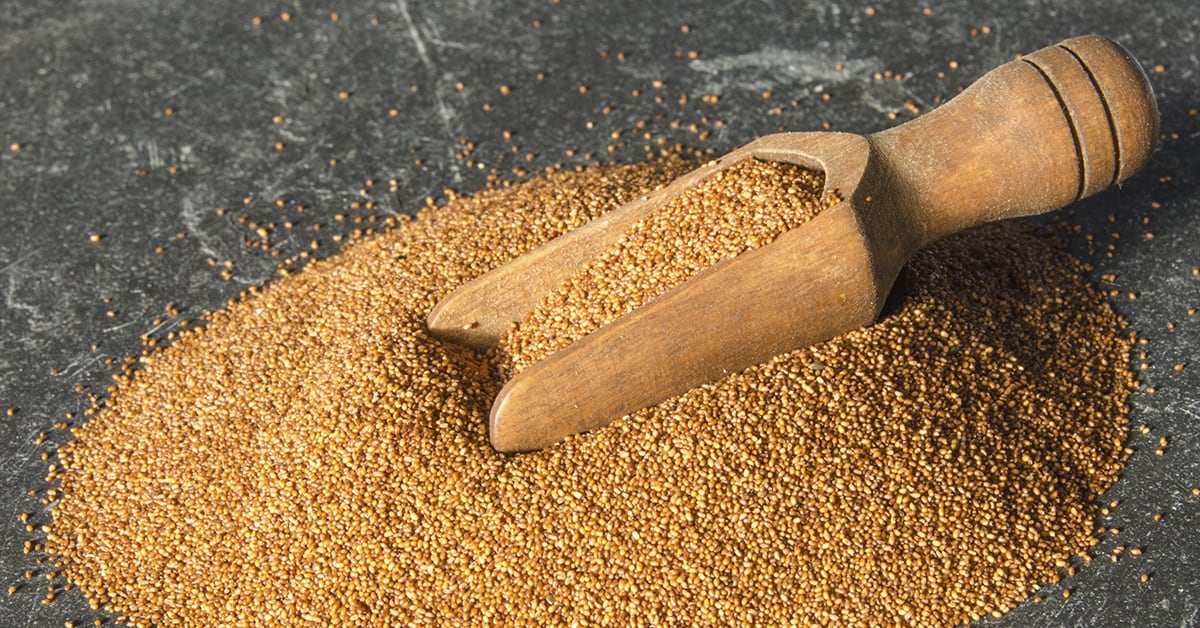
Teff is a tiny, round, gluten-free grain native to Ethiopia and Eritrea. It has a mild, nutty flavor and comes in various colors, from white to dark brown.
Teff is a staple in Ethiopian cuisine, particularly in the fermented flatbread called injera, and is gaining popularity worldwide as a nutritious grain alternative.
- Origin: Ethiopia and Eritrea
- Common Uses: Flatbread (injera), porridge, bread, pancakes, snacks
- Health Benefits: Rich in fiber, protein, vitamins, and minerals; gluten-free; may support digestive health and blood sugar control
38. Brown Sugar
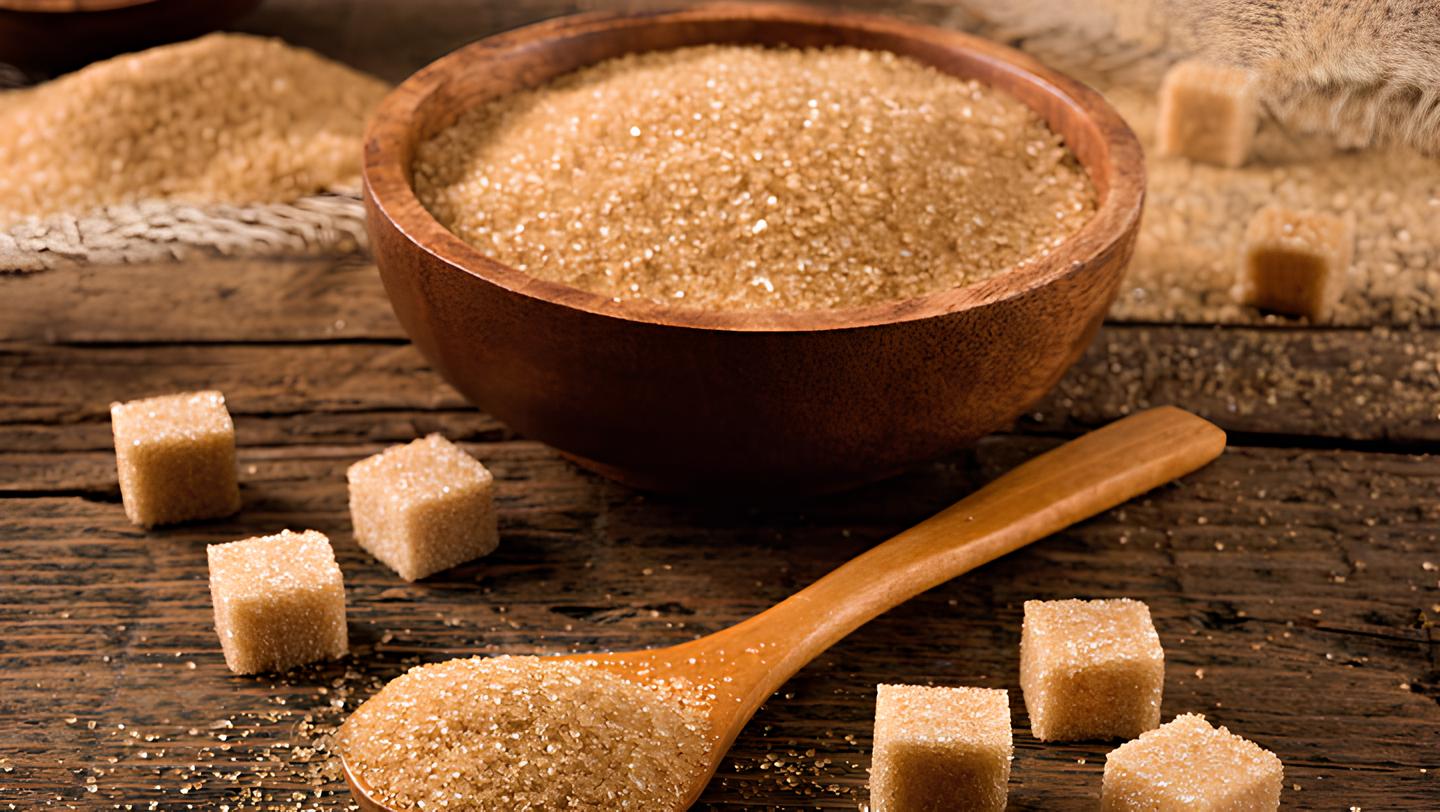
Brown sugar contains molasses, giving it a distinctive brown color and slightly caramel-like flavor.
It comes in two main varieties: light and dark brown sugar. Dark brown sugar has a higher molasses content and a stronger flavor. Brown sugar is used in both baking and cooking.
- Origin: The exact origin is unclear, but it has been used for centuries worldwide
- Common Uses: Baked goods, sauces, marinades, glazes, toppings
- Health Benefits: Slightly higher in minerals compared to white sugar due to molasses content; still high in calories and should be consumed in moderation
39. Maple Syrup

Maple syrup is a natural sweetener made from the sap of maple trees. It is primarily produced in Canada and the northeastern United States.
Maple syrup has a distinctive, rich, and slightly caramel-like flavor and is available in various grades based on color and taste. It is used as a topping and ingredient in both sweet and savory dishes.
- Origin: North America (Canada and the United States)
- Common Uses: Pancake and waffle topping, sweetener for baked goods and beverages, an ingredient in sauces and glazes
- Health Benefits: Contains some antioxidants and minerals; lower glycemic index than table sugar; still high in calories and should be consumed in moderation
40. Whole Wheat Pasta

Whole wheat pasta is made from whole wheat flour, which includes the wheat grain’s bran, germ, and endosperm. It has a nuttier flavor and slightly chewier texture than regular pasta made from refined flour.
Whole wheat pasta is a healthier alternative, containing more fiber, vitamins, and minerals.
- Origin: The exact origin of whole wheat pasta is unclear, but the pasta itself originated in China and was later adopted in Italy
- Common Uses: Various pasta dishes, salads, soups, baked casseroles
- Health Benefits: Rich in fiber, vitamins, and minerals; may support digestive health, blood sugar control, and weight management
Conclusion
Exploring the world of brown foods opens up a treasure trove of flavors, textures, and nutritional benefits.
From the nutty richness of whole grains to the savory depth of meats and the sweet indulgence of chocolate, brown foods offer something for every palate.
By incorporating various foods into your diet, you can enjoy various health benefits, such as improved digestion, heart health, and blood sugar control.
So, don’t overlook the humble brown foods the next time you’re at the grocery store or planning your meals.
Ready to start your brown food adventure? Share your favorite brown food varieties and recipes in the comments below!



